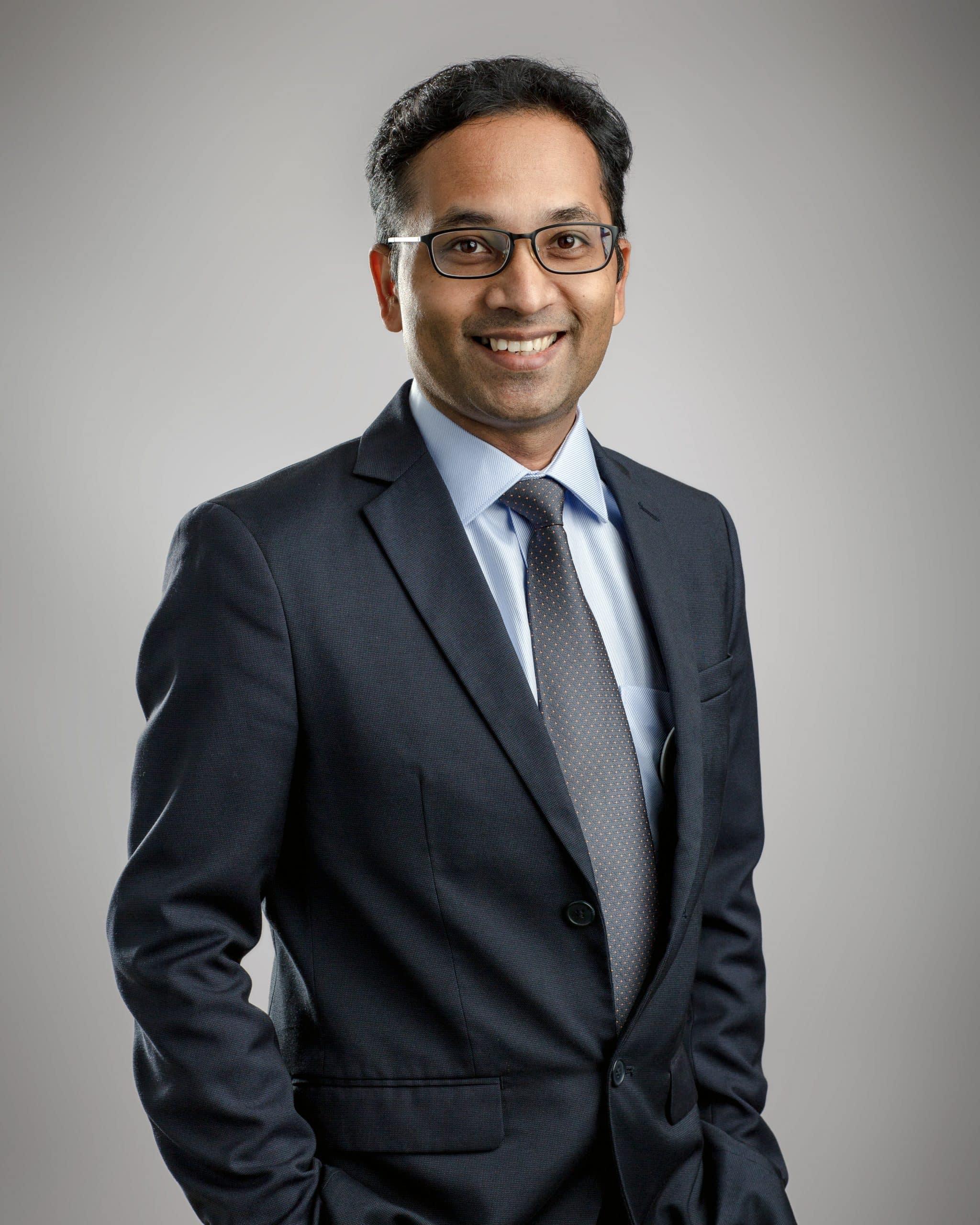Indonesia is the fourth most populous country in the world, with a population of approximately 274 million people. The healthcare landscape in Indonesia is complex and challenging, with a range of issues such as inadequate healthcare infrastructure, a shortage of healthcare professionals, and limited access to healthcare services in rural areas.
Here we look at the Indonesia healthcare landscape and deep dive into how genomics can be used as an effective preventive healthcare solution to tackle the challenges faced by the country on various health-related issues.
Further, we also discuss the economic benefits of genomics to Indonesia and how the government can look at implementing an effective genomics-based healthcare action plan.
1. Exciting times ahead – Expanding our presence in the region with the launch of our new office in Indonesia
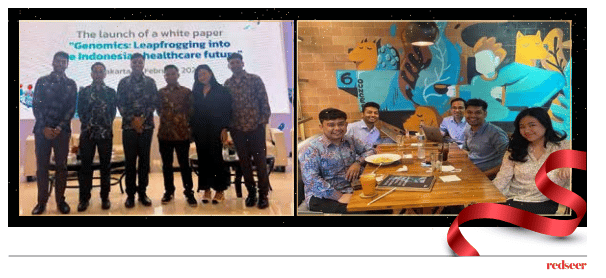
Redseer Indonesia Milestone:
Redseer has expanded its presence to Indonesia, deepening our footprint in the country. Our talented team on the ground is passionate about delivering quality services.
With our other regional office in Singapore already thriving for a few years now, we knew it was time to expand our presence in the region. Our new office in Indonesia is just the beginning of a new and exciting chapter for our company.
2. Indonesia is lagging in terms of life expectancy and healthcare spends, compared to its comparable SEA benchmarks and global average…
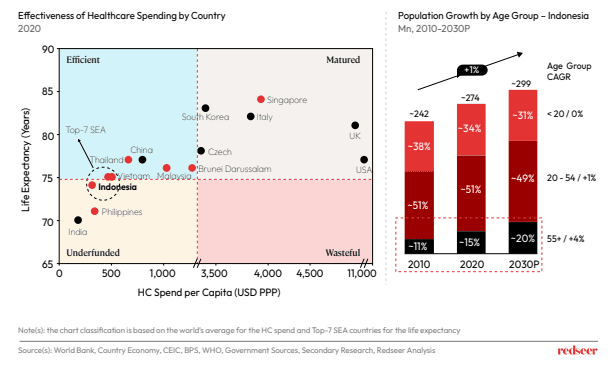
In our weekly update, we share key takeaways from our report, Genomics: Leapfrogging into the Indonesian healthcare future in collaboration with East Ventures and the Minister of Health of the Republic of Indonesia.
Indonesia has been making progress and healthcare expenditure is rising at a healthy rate of ~5% between 2016 & 2021. However, compared to other SEA countries Indonesia still spends less on healthcare. The young Indonesian population will start aging rapidly and population above the age of 55 is expected to reach ~60 million by 2030 growing by ~32% from 2022. The healthcare infrastructure needs to rapidly evolve to cater to the growing healthcare needs of the population.
3. Genomics – a solution to Indonesia’s Healthcare Woes
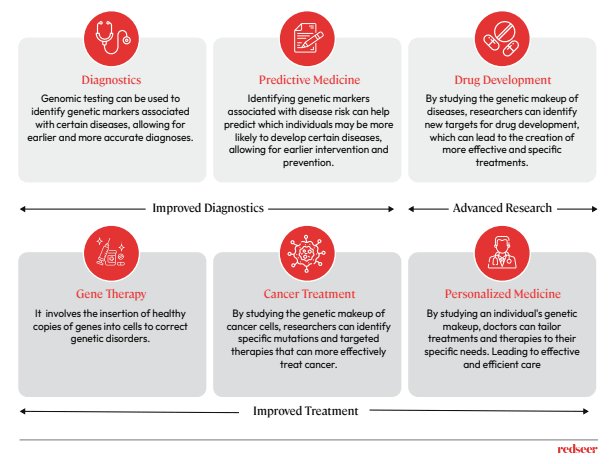
Preventive care can drive effective healthcare outcomes– genomics stands out as a potential solution. Indonesia has one of the highest rates of deaths caused by Non-Communicable Disease (80%). The country is also seeing a rise in the cases of Antimicrobial Resistance , inhibiting effectiveness of medical treatments and has been recognized as a critical area of concern by the Ministry of Health.
Genomics could hold key to tackling the health concerns of Indonesians as it will enable early detection and provide targeted treatment of diseases.
4. Indonesia’s Genomics Roadmap – Indonesia is in the pilot stages of phase 1
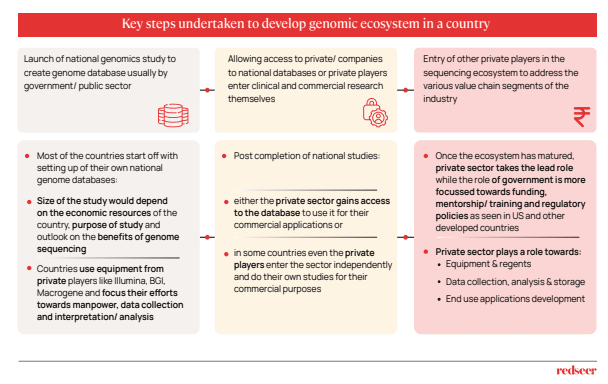
The country has laid down clear objectives of what it wants to achieve and announced a US$ ~ 36
million public budget for healthcare technology transformation to support it just for the year of 2023. The government is working closely with public hospitals to promote genomics in healthcare and established Biomedical and Genome Science Initiative (BGSi) as the leading genomics body of the country which is responsible for managing the genomics project along with the national biobank and its infrastructure.
5. Genomics could potentially unlock US$ ~110 billion worth of economic impact in Indonesia
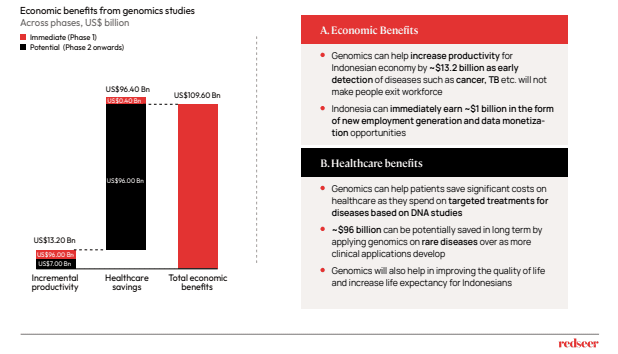
Genomics has the potential to bring significant economic benefits to Indonesia, in addition to the healthcare benefits. The development of a genomics landscape in Indonesia can lead to incremental productivity for patients whose diseases are detected early, and who do not have to exit the workforce. Additionally, it can also help drive down overall healthcare costs because of early detection and targeted treatments.
6. The government needs to assemble 4 key pillars (Policy, Infrastructure, Funding & Human Capital)..
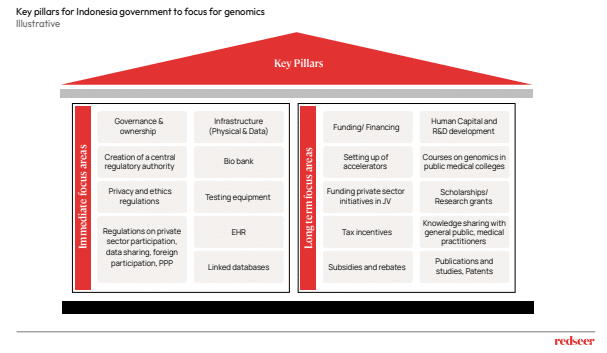
Regulatory framework is the first step towards establishing the genomics ecosystem and addressing the primary issue of private players. Subsequently the government can look at creation of infrastructure and supporting investments, human capital development and other supporting ecosystem.
7. The government needs to assemble 4 key pillars (Policy, Infrastructure, Funding & Human Capital)..
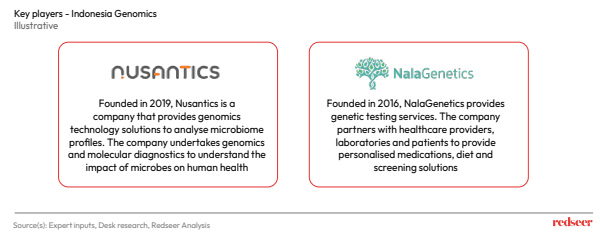
Nusantics and Nalagentics are one of the few players working in the genomics space in Indonesia. There exists significant whitespace in terms of local private player participation in the country in genomics and these 2 players are the pioneers in their respective fields currently.
8. Genomics: Leapfrogging into the Indonesian healthcare future – Whitepaper Launch
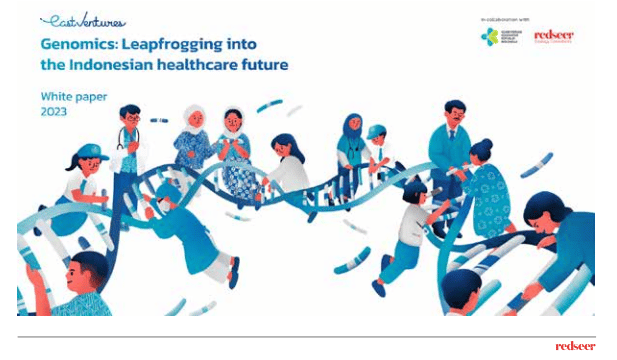
EV in collaboration with Redseer launched a whitepaper on genomics. The whitepaper can be
accessed from the following link. The launch also featured a keynote speech by Budi Sadikin,
Minister of Health of the Republic of Indonesia followed by panel talks to discuss the merits of
genomics in healthcare. The whitepaper can be accessed from the following link here.

